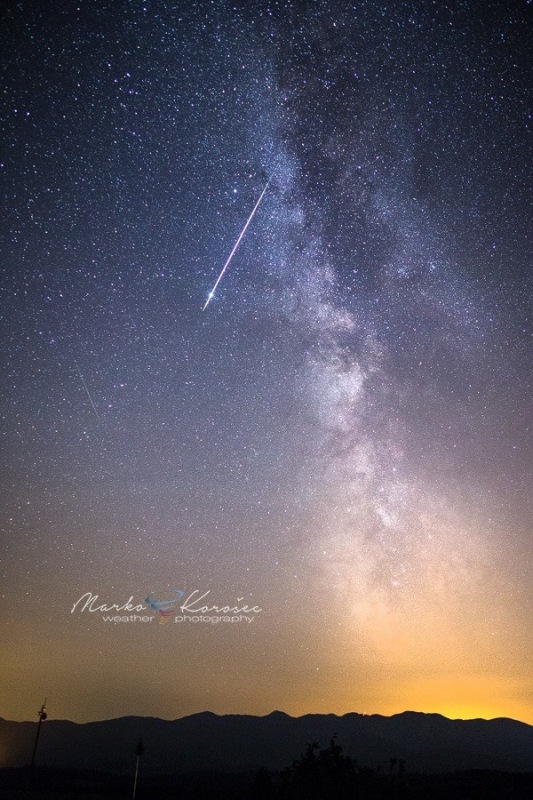But wait, there is more!
You can see plenty of Perseids before and after the peak night. While the peak night offers the most, the Perseids are active for weeks! In fact, the first Perseids already appear in mid-July. Their activity remains low until about a week before maximum. Around August 6 you can expect about 10 Perseids per hour under a dark sky. Then the number increases each night. The night before the peak, August 11/12, already produces about 40 Perseids per hour, half the rate of the peak night. After the peak the activity drops off much quicker: 40 Perseids per hour the night after the peak, 20 per hour two nights after the peak and only a trickle after that. The final Perseids disappear around August 25.
Brilliant sporadic fireball captured several nights before the peak night. It is the kind of surprise waiting for observers watching the Perseid meteor shower. Photo: Peter Atanackov.
But there is even more! The Perseids are the most active, but not the only meteor shower that will be present during your observations. There is a number of smaller meteor showers, such as the Capricornids, Kappa Cygnids and Southern Delta Aquarids. And, there are always random – sporadic meteors.
Surprise! A bright Kappa Cygnid fireball glides down the summer Milky Way. Kappa Cygnids are not very numerous, but many are quite bright! Photo: Marko Korošec.
So if you cannot observe on the peak night, do not despair, there is plenty to see in the week before maximum and several days after the maximum.

